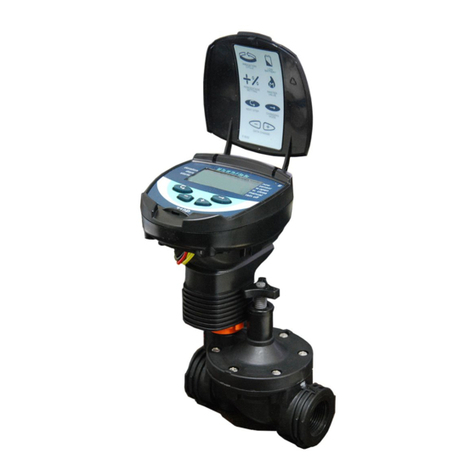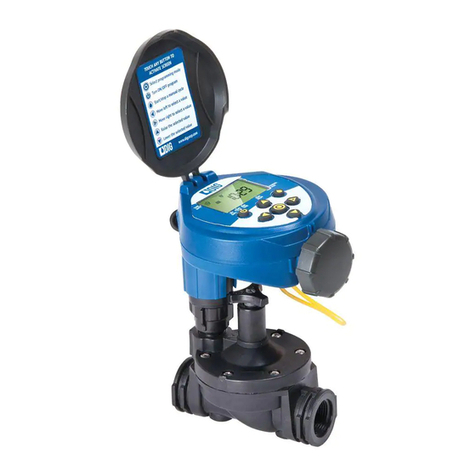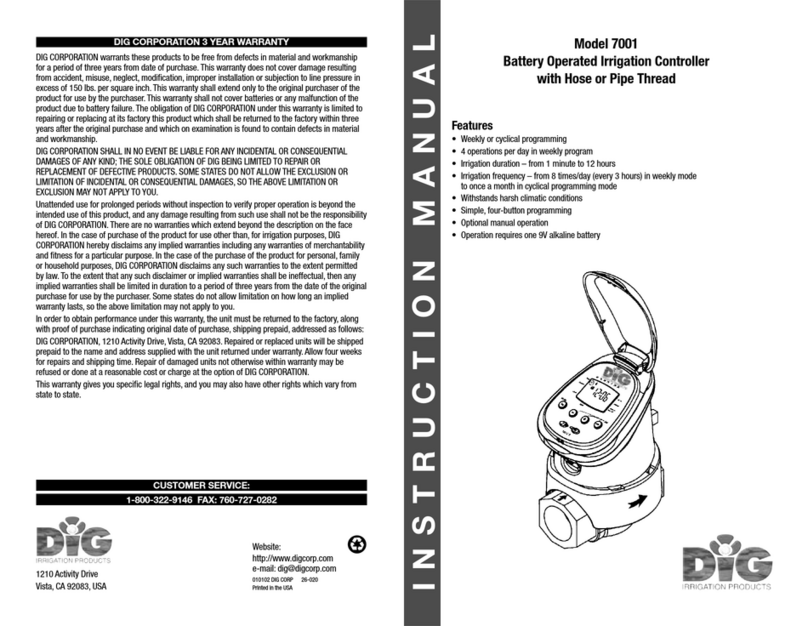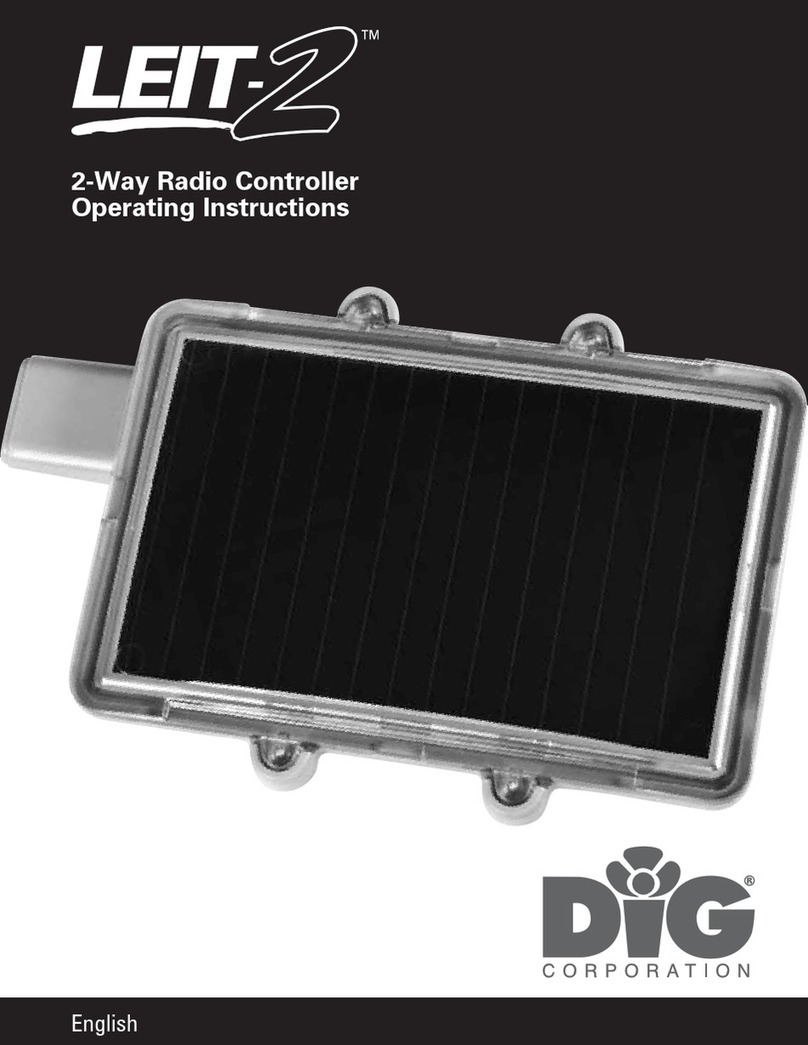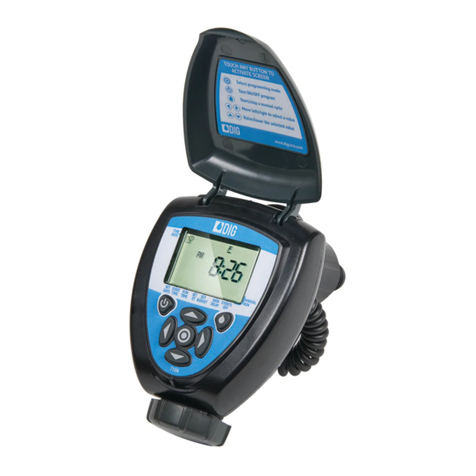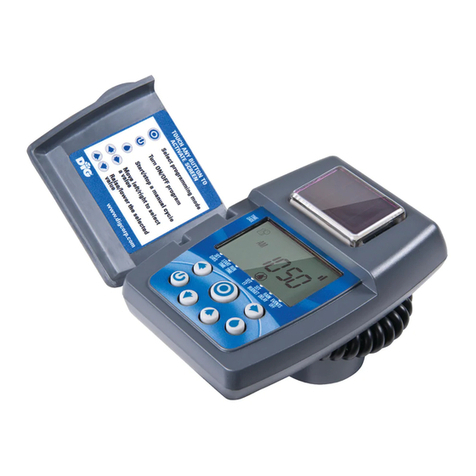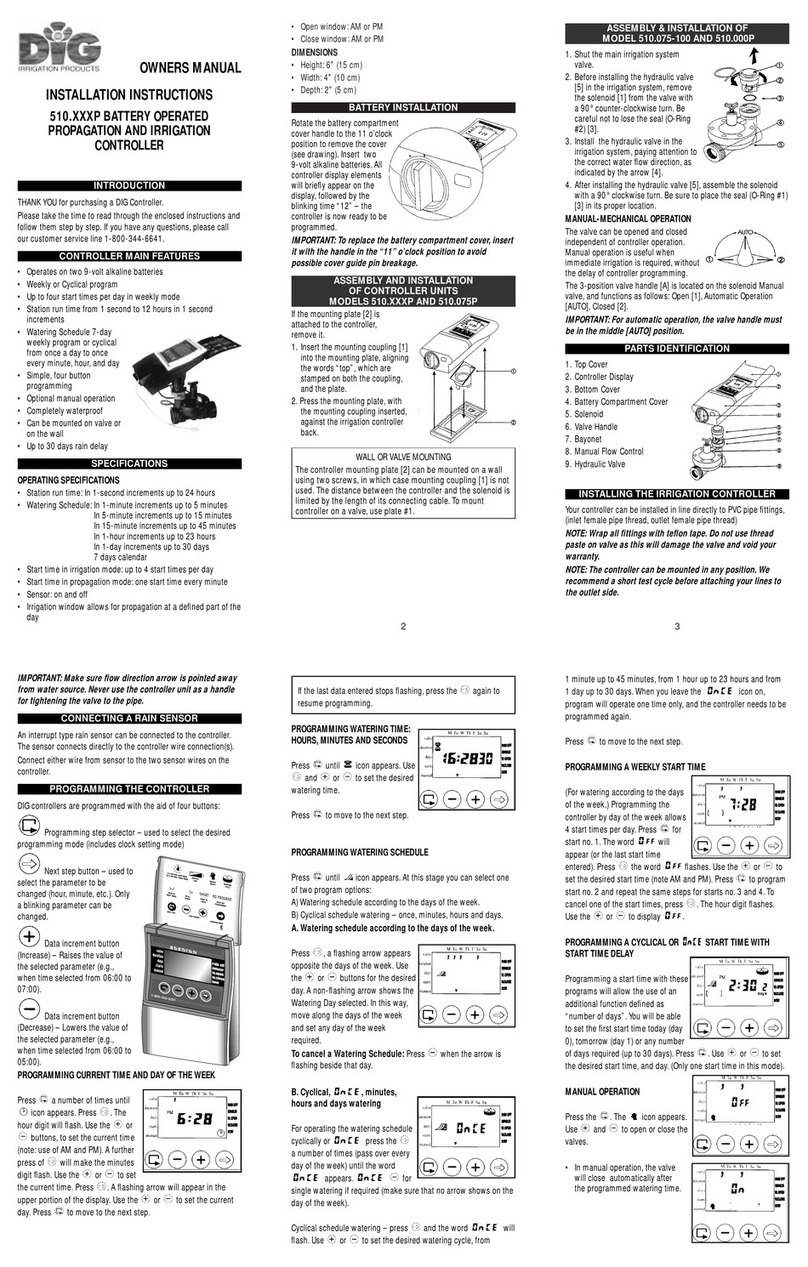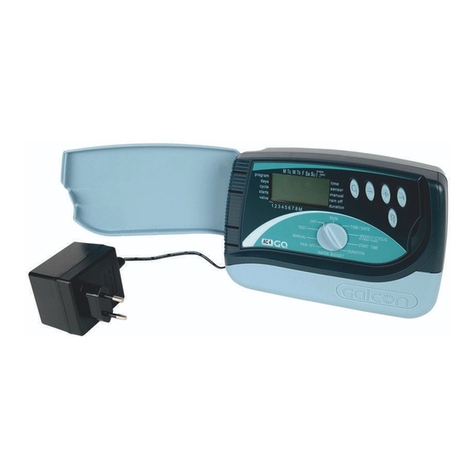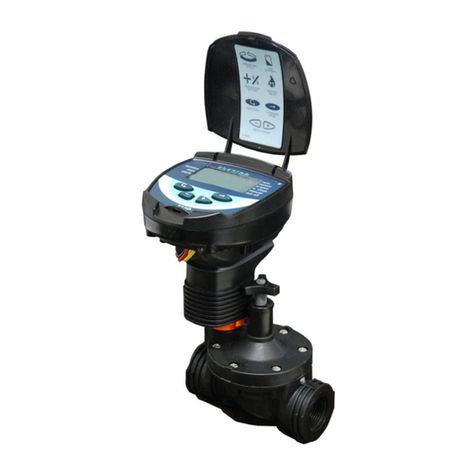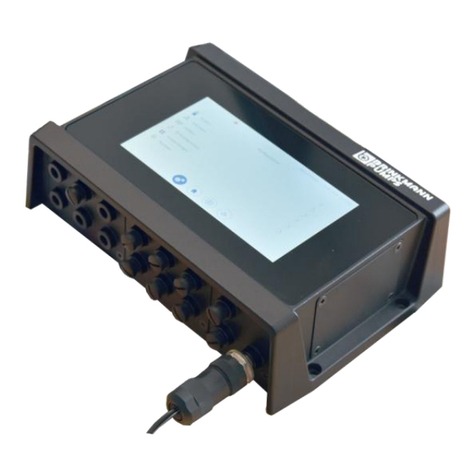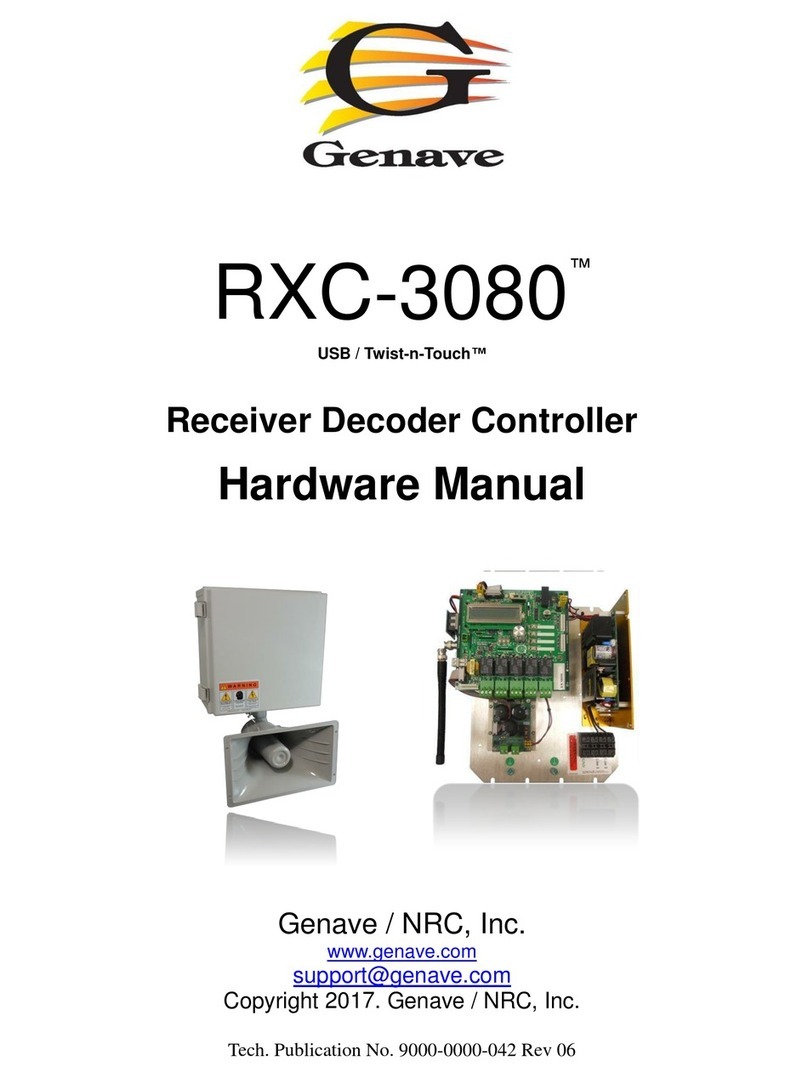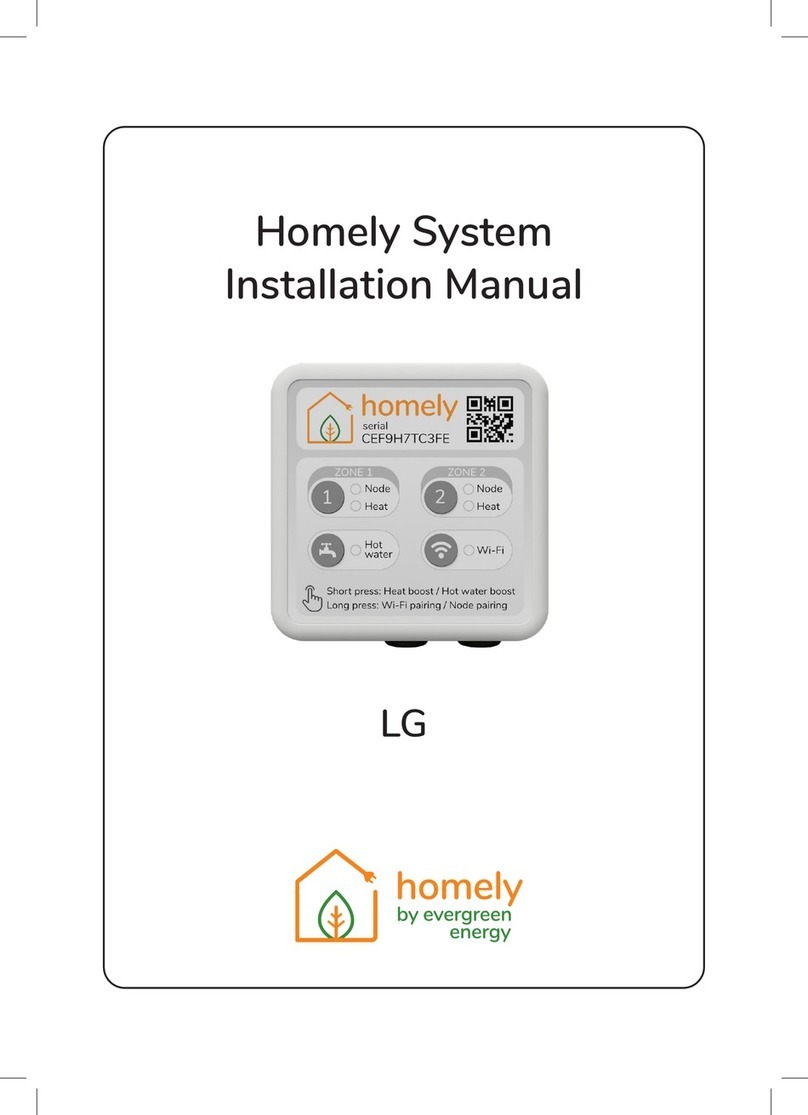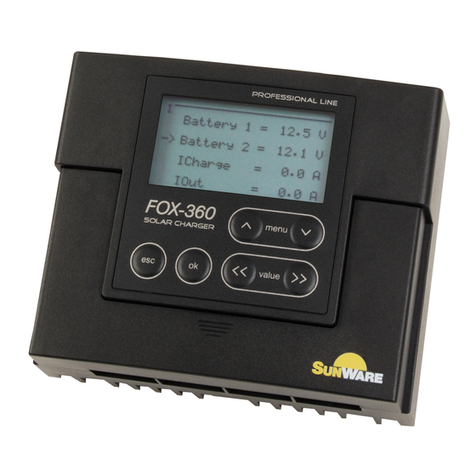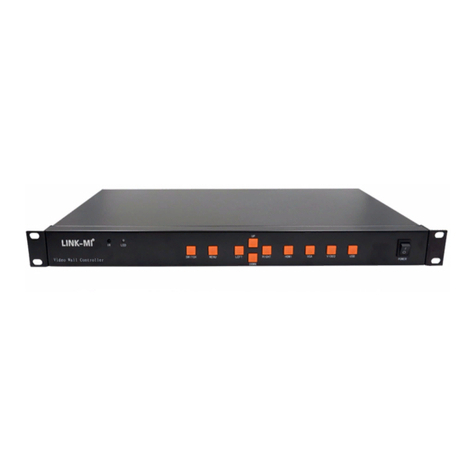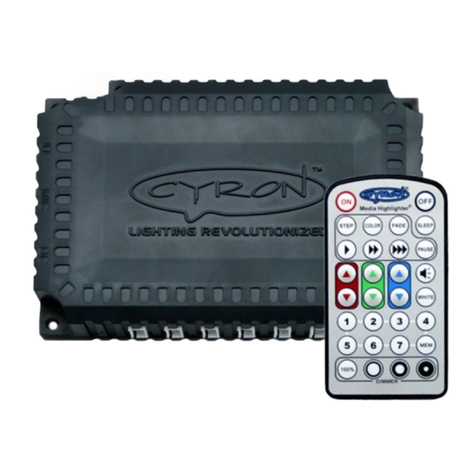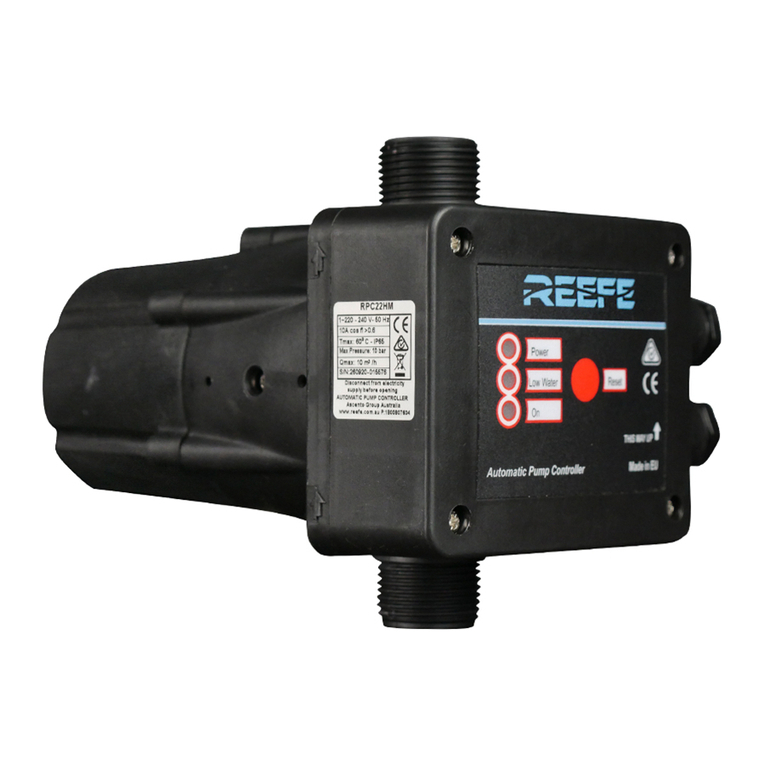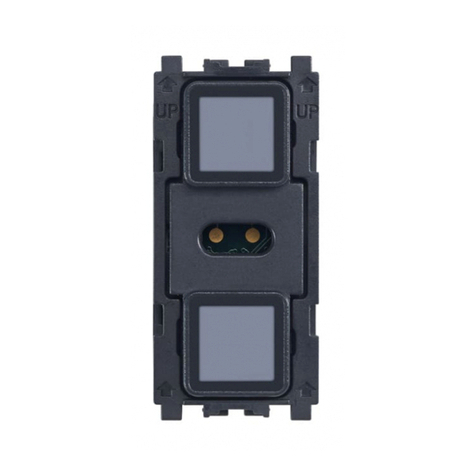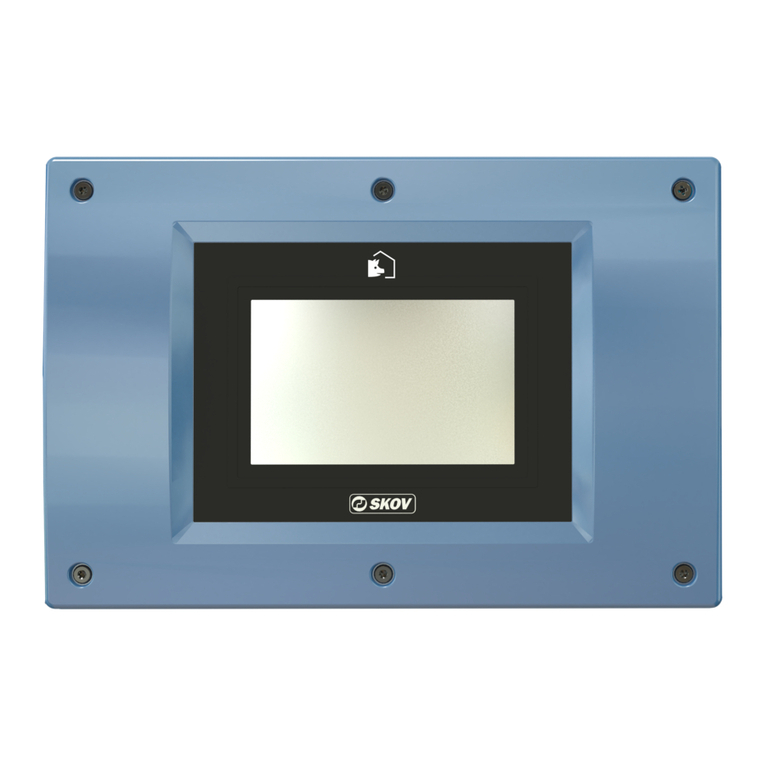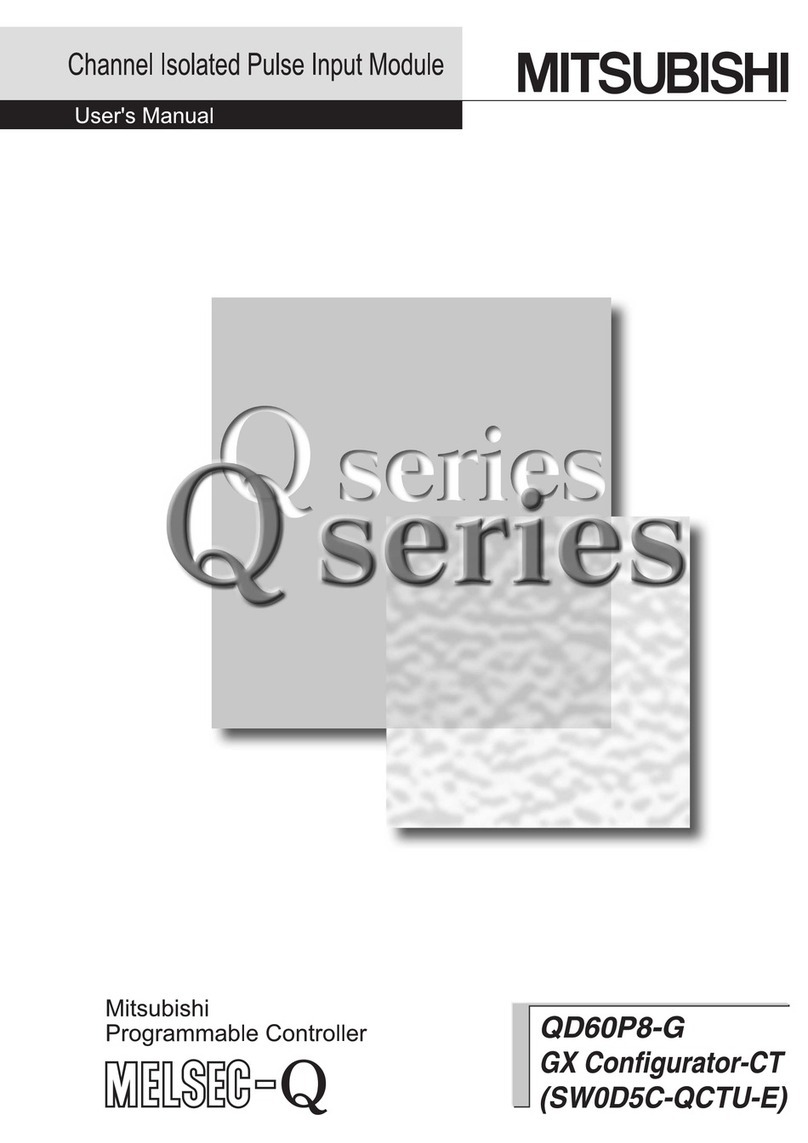DIG LEIT-2ET User manual

INSTRUCTION MANUAL
LEIT-2ET
Two Station
Weather Based
Ambient Light Powered
Wireless Irrigation Controller

2
Table of Contents
A. Introduction ………………………………………………………………… 3
B. About the LEIT-2ET system …………………………………………………… 3
C. Technical assistance ………………………………………………………… 4
D. Copyright and compliance …………………………………………………… 5
E. Features …………………………………………………………………… 6
1. System ………………………………………………………………… 8
1.1 Parts identification …………………………………………………… 8
1.2 System components ………………………………………………… 8
1.3 Tools and supply requirements ……………………………………… 10
1.4 Quick installation setup and operation review ……………………… 10
2. Installation …………………………………………………………… 11
2.1 Solenoid and valve installation ……………………………………… 11
2.2 Controller installation ……………………………………………… 13
A. Valve box mounting dome ……………………………………… 13
B. Mounting column ……………………………………………… 15
C. Valve mounting ………………………………………………… 17
2.3 Maximum wire run ………………………………………………… 18
3. Initial LEIT-2ET connection ……………………………………………… 18
3.1 Connecting to a LEIT-2ET controller for the first time ………………… 18
4. Using a sensor ………………………………………………………… 20
4.1 Sensor installation ………………………………………………… 20
4.2 Compatible sensors ………………………………………………… 21
5. Troubleshooting ……………………………………………………… 21
5.1 Troubleshooting controller ………………………………………… 22
5.2 Troubleshooting solenoid …………………………………………… 22
5.3 Troubleshooting hydraulic valve …………………………………… 23
5.4 Troubleshooting control valve ……………………………………… 24
6. Record chart …………………………………………………………… 25
7. Programming quick reference chart ……………………………………… 26
8. ET/Environment quick reference chart …………………………………… 27
9. Warranty ……………………………………………………………… 28

A. Introduction
Thank you for purchasing DIG’s LEIT-2ET two station, weather based, ambient
light (solar) powered, wireless irrigation controller, which operates as part of
the LEIT-2ET wireless irrigation system. This manual describes how to get the
LEIT-2ET controller up and running. After reading the manual and becoming
familiar with the basic functions of the controller, the user can refer to the
manual for less common tasks in the future.
B. About the LEIT-2ET System
The LEIT-2ET weather based wireless irrigation control system comprises the
LEIT-2ET weather based two-station ambient light (solar) powered irrigation
controller with a rain sensor connection, the LEIT RC2ET handset, and the LEIT
WWS or LEIT WWSE ambient light (solar) powered weather station.
Introduction
The LEIT-2ET, a two station ambient light (solar) powered wireless irrigation
controller, is an advanced and cost effective weather based wireless device
that is programmed using the LEIT RC2ET remote control handset. Site
information entered into the LEIT RC2ET remote control handset is downloaded
into the LEIT-2ET controller, and with hourly weather data received from
the LEIT WWS or LEIT WWSE wireless solar powered weather station, the
LEIT-2ET controller calculates the daily local microclimate evapotranspiration
(ET). The final result is used for a daily adjustment or override of the current
scheduled irrigation program.
The LEIT-2ET includes a photovoltaic module (PVM panel), 2 pairs of 18” (45
cm) station wires (labeled #V1 and #V2) used to connect the controller with up
to two S-305DC solenoids, plus a pair of yellow wires for sensor connection.
The LEIT-2ET has an ultra-compact photovoltaic module that harnesses light
energy to generate electricity that is stored and used to power the controller
day and night in any kind of weather. The programming and operation of
the LEIT-2ET controller is conducted using the LEIT RC2ET remote control
handset, which has an operating range of up to 350 ft (100 m) line of sight, by
way of 2-way radio communication. After installation, no further visits to the
controller are required.
3

The LEIT-2ET two station ambient light (solar) powered wireless irrigation
controller requires daily exposure to light levels at a minimum of 3000 LUX,
which is equivalent to daylight around 7-8 AM on a cloudy day. On very cloudy
days the controller requires more time to charge up and to operate with the
radio.
IMPORTANT: Communication between the LEIT RC2ET remote control
handset, the LEIT-2ET controller, and the LEIT WWS or LEIT WWSE weather
station is automatically limited to daylight hours when there is sufficient light
energy. Longer, brighter days will enable the system to operate over extended
parts of the day.
C. Technical Assistance
Should you encounter any problem(s) with this product or if you do not
understand its many features, please refer to this operating manual first. If
further assistance is required, DIG offers the following customer support:
Technical Assistance USA
DIG’s Technical Service Team is available to answer questions from
8:00 AM to 5:00 PM (PST), Monday-Friday (except holidays) at 1-800-322-9146.
Questions can be emailed to questions@digcorp.com or faxed to
760-727-0282.
Specification documents and manuals are available for download at:
www.digcorp.com.
Customer Assistance Outside the USA
Contact your local distributor.
4

D. Copyright and Compliance
Copyright 2010 DIG Corporation. All rights reserved. LEIT-2ET and LEIT RC2ET
are each trademarks of DIG Corporation. Patent pending.
FCC, IC, Canada and CE certified, Australia and HK compliance.
To comply with FCC RF exposure compliance requirements, the antenna used for this
transmitter is installed to provide a separation distance of at least 8 inches (20 cm) from all
persons (not including hands, wrist, feet and ankles) and must not be co-located or operating
in conjunction with any other antenna or transmitter.
This device is required to comply with FCC RF exposure requirements for mobile and fixed
transmitting devices. This model transceiver generates and uses radio frequency energy.
If not installed and used in accordance with the manufacturer’s instructions, it may cause
interference to radio and television reception.
CONTROLLER FCC ID: UJV-LEIT01 IC: 6694A-LEIT01
HANDSET FCC ID: UJV-LEIT02 IC: 6694A-LEIT02
WEATHER STATION FCC ID: UJV-LEIT03 IC: 6694A-LEIT03
This equipment has been tested and found to comply with the limits for a Class B digital
device, pursuant to part 15 of the FCC Rules. These limits are designed to provide reasonable
protection against harmful interference in a residential installation. This equipment generates,
uses and can radiate radio frequency energy. If not installed and used in accordance with the
instructions, the remote may cause harmful interference to radio communications. However,
there is no guarantee that interference will not occur in a particular installation. If this
equipment does cause harmful interference to radio or television reception, which can be
determined by turning the equipment off and on, the user is encouraged to try to correct the
interference by one or more of the following measures:
• Reorient or relocate the receiving antenna.
• Increase the separation between the equipment and receiver.
• Connect the equipment into an outlet on a circuit different from that to which the receiver
is connected.
• Consult DIG technician for help.
WARNING: the user should make no field changes or modifications to the LEIT-2ET controller,
LEIT RC2ET handset, the LEIT WWS or LEIT WWSE weather station. All adjustments and
changes must be made at DIG’s facility under the specific guidelines suggested in our
instruction manual. Any tampering or modification to the equipment will void the users
authority to operate the unit, render the equipment in violation of FCC part 15, and will void
the warranty.
5

E. Features
• Environmentally friendly; certified lead free; uses light (solar) as a source of
energy
• Power is provided by an efficient photovoltaic module (PVM) and
microelectronic management system fueled by ambient light (solar)
• Operates up to two (2) stations and a sensor without AC power hookup,
batteries, or conventional solar panels
• Two (2) independent programs with four (4) start times per program
• Used with Unimax S-305DC solenoids, which mount on most brand name
valves using one (1) of seven (7) valve adapters
• Client ID enables the user to assign a unique identity code to the controller
and handset; this is a security feature, which locks out unauthorized users
• The LEIT-2ET controller uses information transmitted from the weather
station sensors and the LEIT RC2ET handset to override or adjust the
daily scheduled irrigation program by adjusting the valve time duration in
percents to compensate for evapotranspiration (ET)
• The LEIT-2ET can monitor and receive signals from one (1) to five
(5) weather stations every hour and uses the daily average data for
evapotranspiration (ET) calculation
• The LEIT-2ET controller can monitor the weather stations and when ET is
set to active will alert the user via the handset if information has not been
received or how often the controller has received ET information that day
along with the last time information was received
• The LEIT-2ET controller can receive information from the weather station(s)
to completely stop irrigation if it is raining, freezing or too windy. This
information is provided daily, every hour, during daylight hours only
• Environmentally friendly, utilizes RoHS compliant components
• The LEIT-2ET controller utilizes radio frequency in the ISM band 902-928
MHz (866 Hong Kong, 868 International) CE, IC, FCC certified, Australia and
Hong Kong compliant
6

• The LEIT-2ET controller communicates with LEIT RC2ET handset and LEIT
WWS or LEIT WWSE weather station at a distance of up to 350 feet
(100 m) line of site by way of radio communication
• The LEIT-2ET controller functions both day and night in any weather and in
most outdoor locations
• Default program: five (5) minutes per day with a start time of 9 AM on valve
one (1) with no previous programming, if ID has been assigned
• Non-volatile memory retains program and controller integrity (excluding
time)
• Program stacking feature prevents hydraulic overload
• Custom grouping of the two (2) stations allows the controller to operate the
two (2) valves at the same time if hydraulic limitations are not exceeded
• Available with 18” (45 cm) color-coded 16 gauge wires for each valve and
rain sensor
• Built from tough, rugged material and is resistant to harsh environmental
conditions
• Completely waterproof, complies with IP68 requirements
• The LEIT-2ET has three (3) mounting configurations including green, tan and
purple valve box mounts, direct-to-valve clip mounting and column mounting
with 25” (63 cm) or 50“ (127 cm) mounting columns
• Three-year manufacturer’s warranty
Electrical Specifications:
• Controller power requirements for normal operation:
Minimum of 3,000 LUX
• Controller input: 3,000-100,000+ LUX
• Controller output: 9-volt DC pulse
• Controller station capacity: One 6-9 volt DC pulse, two-way magnetic
latching solenoid per each set of red and white wires
7

Mechanical Specifications:
• Operating temperature:
32° F to 158° F (0° C to 70° C)
• Controller wires gauge: 16 AWG
1. System
1.1 Parts Identification
1. PVM (photovoltaic module) harnesses the
energy of light and generates the electricity
to power the unit day and night in
any weather
2. Antenna
3. Stations and sensor wires
1.2 System Components
To properly install the LEIT-2ET controller, the following components are
needed:
1. Control unit: LEIT-2ET two station weather based ambient light (solar)
powered wireless controller.
2. The controller is installed using one (1) of the mounting
configurations available:
a. Model 30-830: Valve box mounting dome, color green
b. Model 30-835: Valve box mounting dome, color tan
c. Model 30-836: Valve box mounting dome, color purple
d. Model 30-831*: Mounting column plastic attachment used
with galvanized mounting column;
i. MCOL2S: 25” (63 cm) galvanized mounting
column
ii. MCOL2L: 50” (123 cm) galvanized mounting
column
8
Dimensions:
• 3” W x 5 1/2” L
(7 cm x 14 cm)
including the antenna
b
d
c
E
q
ABC
D

e. Model 30-832: Valve clip attachment
with four (4) screws
*The mounting column includes a mounting tool kit with cement
glue to firmly attach the mounting bracket to the column.
3. 305DC-XXX complete in-line valve with solenoid or
S-305DC solenoid (one (1) for each valve used).
4. Seven (7) solenoid adapters are available to fit most valves:
a. Model 30-920 use with BERMAD series 200, HIT series 500, DOROT
series 80, GRISWOLD series 2000, DW and BUCKNER series VB valves
b. Model 30-921 use with RAIN BIRD DV, DVF, PGA, PEB (1” only), GB, EFB-
CP, BPE, PESB (1” only) and ASVF valves
c. Model 30-922 use with HUNTER series ASV, HPV, ICV, PGV, SRV, IBV and ASVF valves
d. Model 30-923 use with WEATHERMATIC series 12000, 21000, 8200CR valves
e. Model 30-924 use with IRRITROL series 100, 200B, 205, 217B, 700,
2400, 2500, 2600 and TORO series 220, P220 valves
f. Model 30-925 use with SUPERIOR series 950, HUNTER HBV and TORO
series 252 valves (1.5” and larger)
g. Model 30-926 use with RAIN BIRD series PEB and PESB (1 1/2” and 2”only) valves
9
Additional system components
E1 O-ring
200-014
model #30-494
E2 Short sleeve
model #30-422
E
F1 O-ring
200-014
model #30-494
FD
D1 O-ring
200-015
model #30-494
D2 Sleeve
model #30-424
C
C1 O-ring
200-012
model #30-495
C2 Long sleeve
model #30-423
B
B1 O-ring
200-021
model #03-077
A
A1 O-ring
200-014
model #30-494
A2 Sleeve
model #30-424
G1 O-ring
200-021
model #30-926
G

5. LEIT RC2ET remote control handset (version SW
U:1.XX.XX EE 1.XX.XX) to communicate with up to
99 LEIT-2ET controllers.
6. LEIT WWS or LEIT WWSE ambient light (solar) powered wireless weather
station used to transmit weather
data to the LEIT-2ET controller.
1.3 Tools and Supply Requirements
1. Standard wire stripper.
2. Phillips screwdriver (#1) if using the valve clip attachment or the mounting
column plastic attachment, or Phillips screwdriver (#2) if using the valve box
mounting dome.
3. Concrete: approximately one (1) 90 lb (40 kg) bag, if using the mounting
column installation.
4. WATERPROOF WIRE CONNECTORS (not included).
1.4 Quick Installation Setup and Operation Review
In order to establish communication for the first time between a LEIT RC2ET
handset and LEIT-2ET two station weather based, ambient light (solar)
powered wireless irrigation controller and the LEIT WWS or LEIT WWSE
weather station, the following steps must be taken:
1. Charge the LEIT RC2ET handset (see LEIT RC2ET instructions).
2. Set up the LEIT RC2ET handset (see LEIT RC2ET instructions).
3. Install the LEIT-2ET controller following the LEIT-2ET installation
instructions, see Section 2, then set it out in the light for initial charge.
4. Install the LEIT WWS (with wind sensor) or LEIT WWSE (without wind
sensor) weather station following the installation instructions inside each
box and allow the controller and weather station to harness light energy.
After the weather station has been installed, no wire connection or
programming is required for the unit’s operation.
10

a.
In bright light conditions (full sun) charging the controller will take under 30 min.
b. In shaded conditions charging the controller could take up to 2 hours.
c. Communication between the remote control handset and the controller
can only initiate when the controller is fully charged.
d. Communication between the controller and the weather stations will
initiate every hour, and only when the controller and the weather
stations are fully charged and the controller ET feature is activated.
5. Follow instructions on page 18, 19 and 20, on how to establish initial
communication between a LEIT-2ET controller and LEIT RC2ET remote
control handset.
2. Installation
NOTE:
Install the LEIT WWS and/or LEIT WWSE at a minimum of 25 ft (8 m) from
the nearest LEIT-2ET controller.
2.1 Solenoid and Valve Installation
NOTE: Maximum operating pressure is up to 150 PSI (10.5 BAR).
Use DIG’s 305DC-XXX valve or Model S-305DC solenoid and select the
appropriate conversion adapter for the valve(s) that will be used with the
S-305DC solenoid (see list on page 9, #4).
1. Shut off the main line to the valve.
2. Install the valve (model 305DC-XXX) or unscrew the conventional solenoid
from the valve installed and remove the solenoid housing, solenoid stem,
plunger, spring, and O-ring (if necessary).
3. Select the appropriate conversion adapter(s) for the valve(s) (see list on
page 9, #4).
IMPORTANT:
Do not remove existing O-ring on BUCKNER and SUPERIOR
valves.
When installing adapter on BUCKNER and SUPERIOR valves remove
the adapter sleeve (model 30-424) before installing.
4. Thread and tighten the conversion adapter clockwise to the compatible
valve port. Do not over tighten (see A ).
11

5. Screw model S-305DC solenoid into the selected adapter. Tighten the
solenoid by hand, but do not over tighten (see B).
12
6. After installation is complete, turn the water supply on and pressurize the
main line. The valves will open momentarily and then shut off. Test each
valve in manual operation by turning the solenoid to the left a half turn or
until the valve opens (see C).
7. Splice the solenoid hot wires (red) to the controller incoming station wire
(V1 red). Splice the solenoid white wire to the single incoming white wire
(V1). If needed, repeat for the second valve. USE 2 CONVENTIONAL DRY-
SPLICE WATERPROOF CONNECTORS. Leave slack on each side of the
wires so that repairs can be carried out easily.
NOTE: The solenoid operates only with 2-way
normally closed valves.
NOTE: V1 may be identified by label or striped
wires.
Additional system components
Additional system components
Additional system components
A B C
ONOFF

IMPORTANT: If a valve remains open in manual operation, you may need
to examine the solenoid adapter and sleeve to see that they are installed
correctly and the adapter is firmly secured. Do not over tighten the solenoid to
the valve and do not cross thread the adapter into the solenoid cavity.
CAUTION: For all valves with built-in internal manual bleed lever, make
sure the lever is in closed position. Do not move the lever after installing the
solenoid with the valve adapter. If the manual lever on the valve is used, it can
damage the adapter or the sleeve, causing the valve to stay open.
2.2 Controller Installation
Option A: Valve Box Mounting Dome, color: green (model 30-830), tan
(model 30-835) or purple (model 30-836)
1. Lay the template on top of the rectangular or round irrigation box cover
and drill 4-8 holes, make sure to review the template position on the valve
box before drilling (see drilling instruction on the template) using 1/4”
drill (.250”) (6 mm). The holes are used to hold the mounting dome to the
irrigation box cover. Using the same template, drill a single hole using a
1/2” (.500”) (12 mm) drill bit to allow the
wires from the controller into the
valve box cover (see - ).
13
1
3
4
2
5
1
3
4
2
5
c
b
1
3
4
2
5
1
3
4
2
5
d
e
be

2. Insert the controller into the mounting dome (see ).
3. Insert the controller wires into the valve box cover (see ).
4. Use #2 Phillips screwdriver to attach the mounting dome to the valve
box cover with the #10 Phillips head screws that are included with the
mounting dome (see ).
14
1
3
4
2
5
f
5. There are 6 wires (or three sets) from the controller, one (1) pair for each
valve and one (1) pair for sensor connection (labeled V-1, V-2 and S on
the housing where the wires enter the controller). Connect the controller’s
output station wire (V1 red) to the hot wires (red) on the solenoid. Then
connect the controller’s output station common wire (V1 white) to the white
wire on the solenoid
USING CONVENTIONAL DRY-SPLICE WATERPROOF
CONNECTORS.
Repeat the same steps for station 2. Leave slack in the wires
on each side so repairs can be carried out easily (see ).
NOTE: V1 may be identified by label or striped wires.
gS
d
e
f
g

6. Reattach the valve box cover on top of the valve box and, if available, lock
the cover to the box (recommended) (see ).
Option B: Mounting Column (model 30-831)
1. Excavate a trench from the valve to the column location and then pull a set
of colored wires from the valve area to the mounting column location (one
(1) pair for each valve). Each pair should consist of one (1) white wire, and
one (1) red or colored wire, preferably of differing colors. Each pair should
be taped and marked separately at both ends, so that the wires do not get
cross-connected (see ).
2. Insert the pairs of wires through the bottom of the mounting column and
push the wires up through the column until at least 6”
(15 cm) of wire
extends from the top of the mounting column (see ).
3.
Install the mounting column, setting the curved bottom of the mounting
column in an 8” x 8” x 6” (20 x 20 x 15 cm) frame and pour in the 90 lb (40 kg)
sack of cement (see detailed illustration). Make sure the column is vertical
and the opening in the curved bottom is accessible and unclogged (see ).
15
IMPORTANT: Make sure the cement pad is dry before continuing
installation.
Column mounting (phase 1)
Column mounting (phase 2)
d
c
b
g
d
c
b

4. Pull the two (2) pairs of field wires from the valves
through the center hole in the bottom of the mounting
plastic bracket (see ). There are three (3) sets of wires
from the controller, one (1) pair for each valve and one
(1) pair for sensor connection (labeled V-1, V-2 and S on
the housing where the wires enter the controller). First,
trim the controller’s valve wires to about 3-4” (7-10 cm)
from the controller and then connect the controller
output station wire (V1 red and white) to the incoming
wires (#1 red or colored and white) using two (2)
small WATERPROOF WIRE NUT CONNECTORS.
If necessary, repeat the same procedure for valve #2
using the wires labeled V2 (see ). Next, bring the two
(2) yellow (or yellow and black) sensor wires through
the small hole on the side of the mounting bracket
(see ). Finally, place the wires with nuts inside the
bracket body and secure the plastic bracket into the
controller using the four (4) small Phillips screws provided
(see - ).
5. Next, apply a thin layer of cement glue (included with the
column) to the top on the outside area of the column and
slide the controller mounting bracket into place on top of
the column (see ).
6. At the valves, connect the incoming station wire (V1 red) to the hot
wires (red) on the solenoid USING CONVENTIONAL DRY-SPLICE
WATERPROOF CONNECTORS. Connect the controller incoming station
common wire (V1 white) to the white wire on the solenoid USING
CONVENTIONAL DRY-SPLICE WATERPROOF CONNECTORS and, if
needed, repeat for the second valve and sensor. Leave slack in the wires on
each side so that repairs can be carried out easily (see ).
16
Column mounting (phase 1)
e
f
g
Column mounting (phase 1)
h
e
f
g
h
i
f
g

Option C: Valve Clip Attachment Bracket (model 30-832)
1. Slide the wires from the controller into the valve clip attachment bracket
and connect the valve clip attachment bracket to the controller using the
four (4) screws included (see ).
17
Column mounting (phase 2)
i
b
c
d
2. Connect the incoming station wire (V1 red) to the hot wires (red) on the
solenoid
USING CONVENTIONAL DRY-SPLICE WATERPROOF CONNECTORS.
Connect the controller incoming station common wire (V1 white) to
the white wire on the solenoid
USING CONVENTIONAL DRY-SPLICE
WATERPROOF CONNECTORS
and, if needed, repeat for the second valve
and sensor. Leave slack on each side of the wires so that repairs, if needed,
can be made easily (see ).
b
c

NOTE: V1 on the bottom of the housing where the wires enter the controller.
3. Attach the controller into place on the top of the solenoid (see ).
2.3 Maximum Wire Run
100’ (30 m) using 18 AWG (0.75 mm) solid core direct burial irrigation wire
200’ (60 m) using 14 AWG (2.5 mm) solid core direct burial irrigation wire
300’ (90 m) using 12 AWG (4 mm) solid core direct burial irrigation wire
3. Initial LEIT-2ET Connection
3.1 Connecting to a LEIT-2ET controller for the first time
NOTE: Prior to initial LEIT-2ET connection, LEIT RC2ET handset Client ID must be
set at AAA (factory default setting).
In order to begin communication with a new LEIT-2ET controller using the handset,
a series of initial setup steps must be made. First, the user connects to the LEIT-
2ET controller via CONTROL ID 00 DEFAULT SETUP. Next, the user must assign
the controller a new Control ID (recommended ID # 2-99). At this stage, the user
can also change the existing Client ID of the controller (controller default Client
ID is AAA) as long as it is also changed on the handset after exiting the controller
program. In addition a descriptive controller address or name can be assigned to
the controller with up to 14 characters to uniquely identify the location of each
LEIT-2ET controller on the system.
Step 1: Make sure the LEIT-2ET controller is out in bright light to harness light
energy used to power the controller. It will take about 30 minutes, or less, in direct
sunlight.
Step 2: Splice the two (2) yellow (or yellow and black) sensor wires together using
waterproof connectors. This splice will indicate that the controller is ready to
communicate with a LEIT RC2ET remote control handset.
Step 3: Connect via RADIO UPLINK screen:
a. On the LEIT RC2ET remote control handset’s MAIN MENU, press
and highlight
RADIO UPLINK icon. Press again, and CONTROL ID: 00 DEFAULT SETUP
with the first Ø blinking appears. Press again to connect. ARE YOU SURE?
screen appears with RADIO UPLINK icon selected. Press again to connect.
18
d

CONNECTED appears momentarily, then, CONTROL ID: 00, NO DESCRIPTION
appears. Press again and CONTROL ID: 01, NO DESCRIPTION appears with Ø
blinking. At this point the user can assign a new controller ID.
b. To assign a controller ID, press
or
and enter a number (1-9) for the first
digit. Press and repeat the steps with the second digit (we recommend
changing the ID number to a number higher then 01). Next, assign description,
name or address (recommended). The default is NO DESCRIPTION. Press and
the first letter of NO DESCRIPTION is blinking. Press
or
and enter a letter
for the first digit. Press and repeat the steps for each letter. After completion,
press to download the new information with the new ID number and address.
Use the new ID number to connect to this controller and use the address or
name to identify the controller location.
c. Setting a new client ID (A-Z): The default ID is AAA (this is a security feature).
If the controller CLIENT ID is changed from AAA to other letters, the user must
update the handset to the same client ID after exiting the controller program.
Repeat the steps to select a new ID. When finished, press to connect and
upload the new information. ARE YOU SURE? screen appears. Press again
to download the information. UPDATE SUCCESSFUL message will appear
momentarily confirming that the controller received the information and Setup is
updated and complete. After the update is completed the SETUP MENU appears.
Exit SETUP MENU and the controller is ready to program.
The user can now easily connect back to this controller using the newly assigned
CONTROL ID and CLIENT ID. Repeat the steps to program additional controllers.
NOTE: When connecting to a LEIT-2 controller, the controller and handset CLIENT
ID must be the same.
ATTENTION: The two yellow (or yellow and black) sensor wires are left connected
so the RAIN OFF alert will not appear. If a rain sensor needs to be added, see
Section 4 – Using a Sensor.
19

4. Using a Sensor
NOTE: Do not install a sensor until the controller has been given an ID # by
the LEIT RC2ET remote control handset.
4.1 Sensor Installation
Remove the WATERPROOF CONNECTORS from the LEIT-2ET controller’s
yellow (or yellow and black) wires and splice them. Splice the sensor’s two,
normally closed (N/C), black wires. Connect one of each yellow wire or one of
the yellow and black wires from the controller with one of each black wires
from the sensor using WATERPROOF CONNECTORS (if sensor is connected,
the sensor will override the program when triggered).
20
10:00 10:00 10:00
10:00
10:00
10:00
10:00
10:00
10:00 10:00
10:00 10:00
10:00
RADIO UPLINK RADIO UPLINK YES / NO
CONNECTCONNECT
CONTROLLER MENU
CONT. SETUP
CONTROL ID: 00
PMS
HW: 1.8 SW:3.2
CONTROL ID: 01
NO DESCRIPTION
CLIENT ID: XXX
CONTROL ID: 00
NO DESCRIPTION
ARE YOU SURE?
YES / NO
ARE YOU SURE?UPLOADING
CONNECT
CONNECTING
CONNECT
DOWNLOADING
CONNECT
UPDATE
SUCCESSFUL
CONNECTED
CONNECTED TO
MAIN MENU
Table of contents
Other DIG Controllers manuals
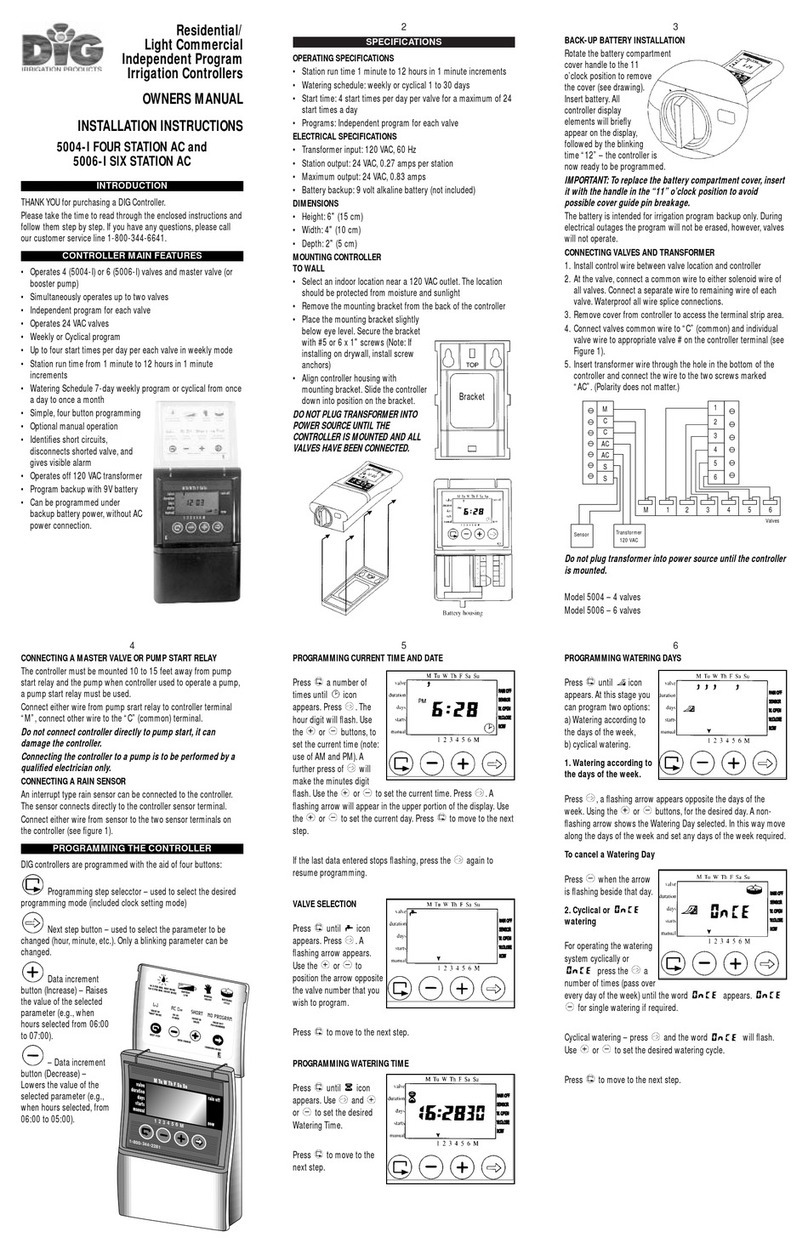
DIG
DIG 5004-I Four Station User manual
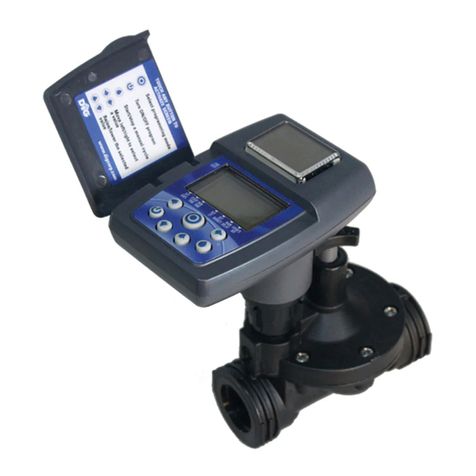
DIG
DIG ECO1 ILV-075 User manual
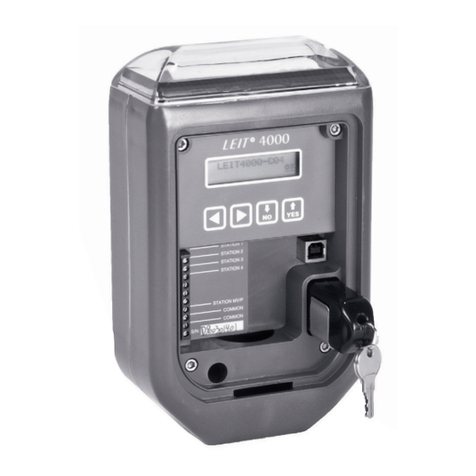
DIG
DIG LEIT 4000 Series User manual
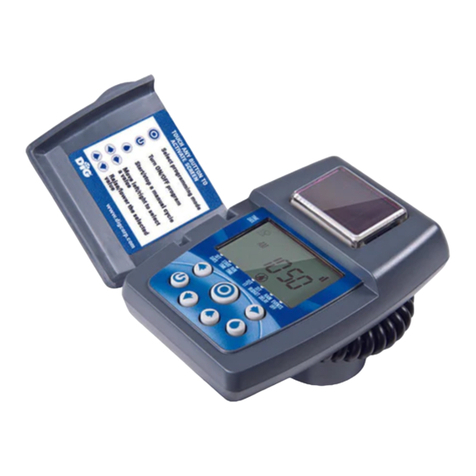
DIG
DIG LEITMVA User manual

DIG
DIG ECO1 MVA User manual
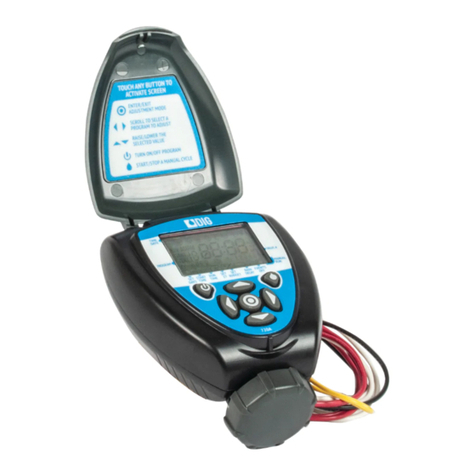
DIG
DIG 720A Series User manual
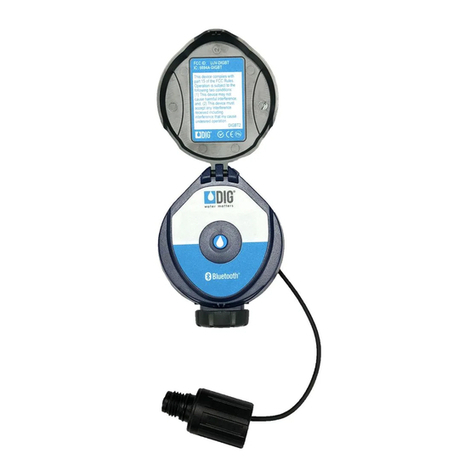
DIG
DIG 410BT Series User manual
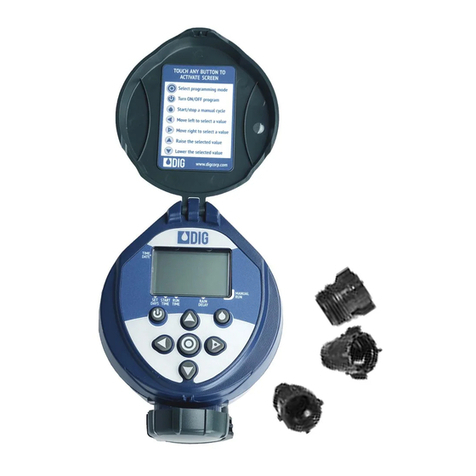
DIG
DIG 400A Series User manual
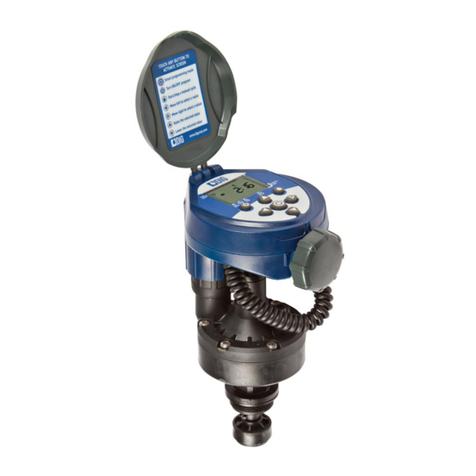
DIG
DIG RBC MVA User manual
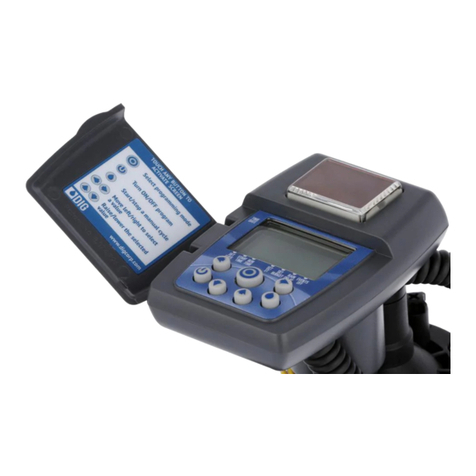
DIG
DIG LEIT1-000 User manual
Popular Controllers manuals by other brands
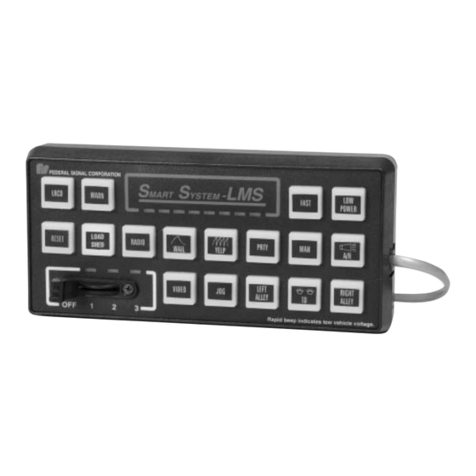
Federal Signal Corporation
Federal Signal Corporation SmartSystem SS2000C31 Operation and configuration instructions
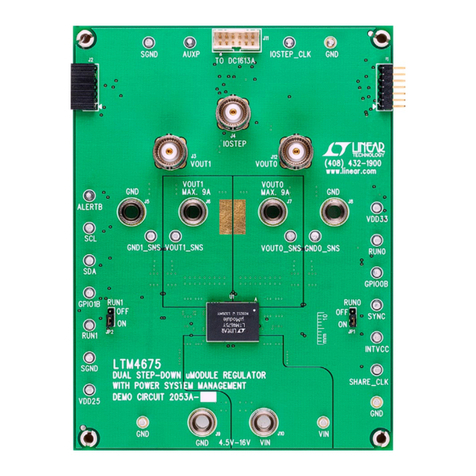
Linear
Linear DC2053A Demo Manual
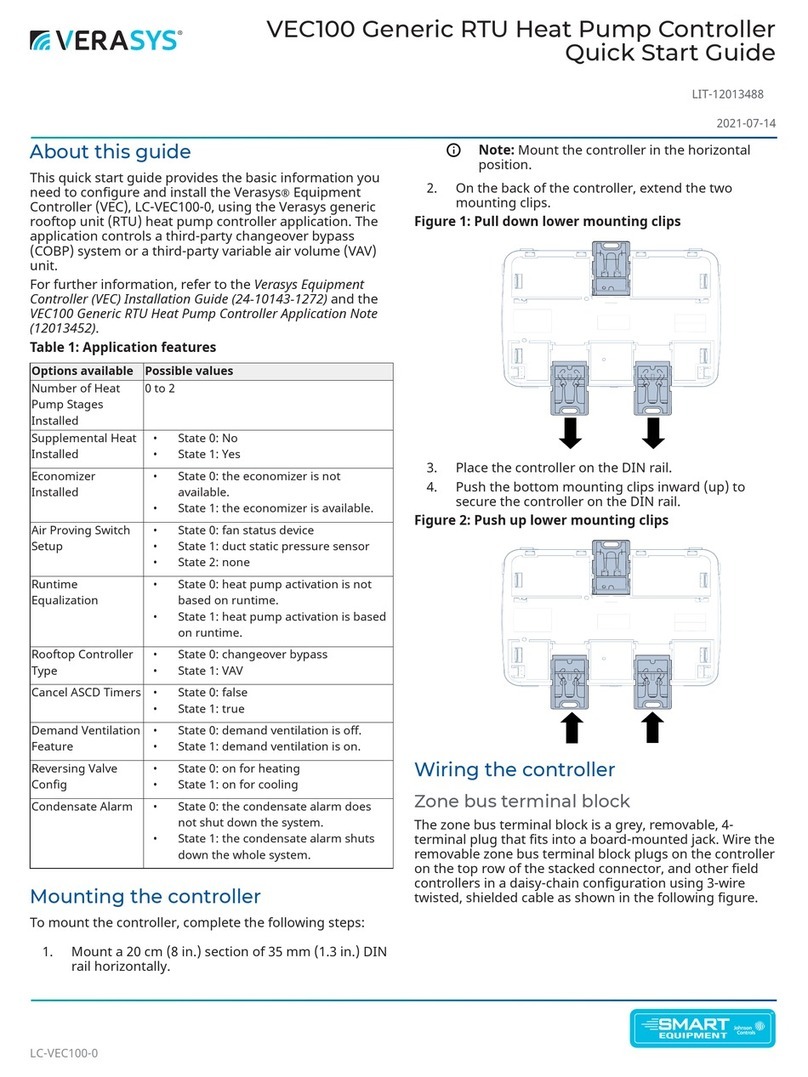
Verasys
Verasys VEC100 quick start guide

ICM Controls
ICM Controls ICM600 Application guide
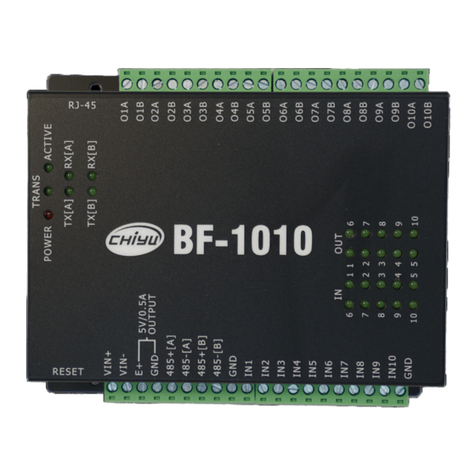
CHIYU
CHIYU BF-1010 user manual
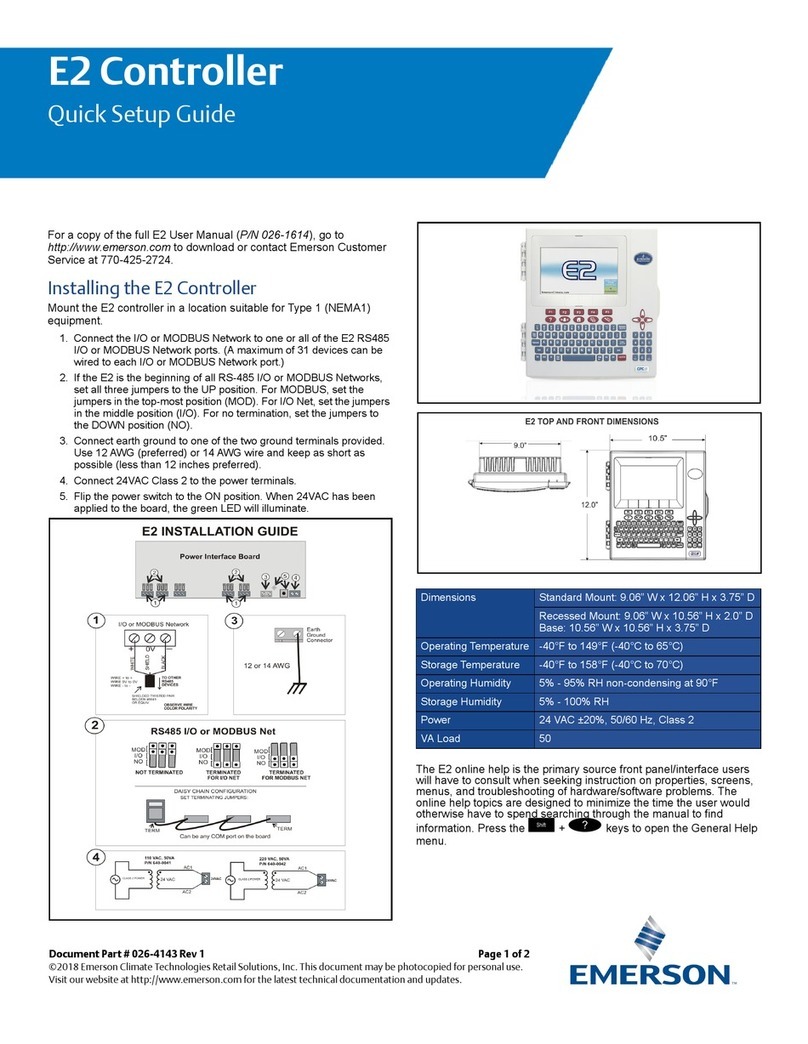
Emerson
Emerson E2 Quick setup guide
